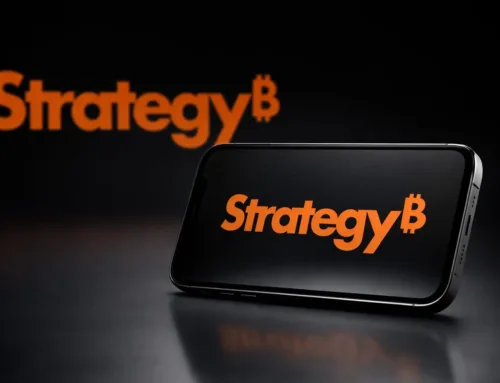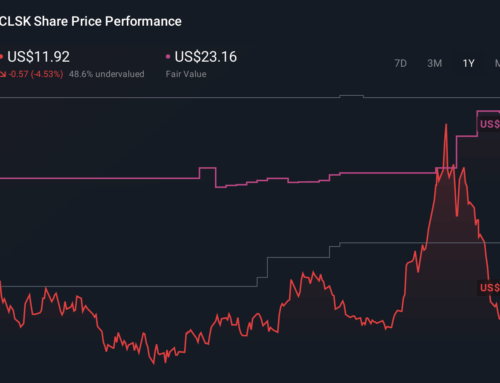Investors taking on more risk through defense, international ETFs
June 4, 2025
In the latest installment of Yahoo Finance’s ETF Report, Invesco’s Nasdaq 100 ETF (QQQ) and the iShares Russell 2000 ETF (IWM) are seeing some recovery from April’s tariff-induced sell-offs.
CFRA Research head of ETF research Aniket Ullal examines the investor behaviors driving ETF inflows, noting the growth in defense funds and international market ETFs.
To watch more expert insights and analysis on the latest market action, check out more Catalysts here.
00:00 Speaker A
Since the early April tariff induced sell-off investors are piling back into risk on trades with both Invesco’s NASDAQ 100 pegged ETF and IShares small caps ETF both back in positive territory. But, there are still concerns ahead especially when it comes to the dollar still being under pressure. For this, I want to bring in Aniket Ullal, CFRA’s research’s head of ETF research. This week’s ETF report brought to you by Invesco QQQ. Aniket, great to have you here. Uh talk to me about what you’re seeing in the flows. It seems like investors are buying a little bit of risk in everything.
01:16 Aniket Ullal
Well, uh we try to look at both performance and flows in tandem because sometimes flows can lag uh performance. From a performance perspective what you said earlier is absolutely right. We saw bottom on April 8th, which was of course the date when President Trump paused reciprocal tariffs. Since before that date in the year, you know, SPY was down 18%, uh IBIT the Bitcoin ETF was down significantly, as was QQQ which is really the best proxy from an ETF perspective for the AI trade. All of those ETFs have bounced back significantly since then, most of them 20 plus percentage, in the case of uh IBIT more than 30%. So, from a performance perspective we have seen investors really go back and kind of take on more risk. To your point about the flows, there are certain categories where we’ve seen significant inflows, uh defense ETFs is one of them, utilities flows another. So, you know, both from a flows and performance perspective, it’s a much healthier environment now for ETF investors than of course early April.
03:23 Speaker A
Yeah. And talk to me about those flows into defense ETFs. What is that signaling to you about sentiment?
03:44 Aniket Ullal
I I That I think is really driven by what’s happening in the uh budget reconciliation process. If you look at the budget there’s another $150 billion allocated uh to defense. This is on top of the $850 billion, of course, in annual spending that’s funded through a continuing resolution. So, you know, this includes $27 billion for the golden dome project which President Trump has kind of talked about quite a bit. Um so, this really benefits of course the large um defense contractors. You know, we’ve got ETFs like ITA, which provide exposure to the big defense contractors. But, there’s also another huge component here which is software automation process automations benefits firms like Palantir, c3.ai and ETFs like PPA, which are kind of broader in terms of their defense exposure and hold some of the software and kind of process automation companies actually benefit a lot from the defense trade. So, we actually think PPA is a good proxy, which is an Invesco defense ETF, for the kind of broader defense play when it comes to uh benefiting from the budget reconciliation process.
06:00 Speaker A
That’s that’s a really great overview. I want to uh have you do the exact same thing but for international ETF flows. What are you seeing there? And what is it indicating to you about where, or I guess how convicted investors are in the narrative that international is going to continue to outperform U.S.?
06:34 Aniket Ullal
It’s going to be interesting to see how patient investors are with international. In the past we have seen investors sometimes go to international when we’ve seen some seen some weakness in the U.S. and then pull back. So far, this year flows have been very strong particularly within uh Europe, and we starting to see in in emerging markets, emerging markets ex China be kind of an interesting trade. Within Europe of course, Germany is one of the engines of Europe. Uh we’ve seen stimulus in Germany in terms of, you know, 500 billion Euro um infrastructure uh build, you know, spending allocation. Uh we’ve seen defense stocks really lead that. And the way we think about European allocation is it’s really a complement to U.S. allocation because U.S. ETFs are very very tech uh dominated, very dominated by the AI trade. If you look at European ETFs in general, they tend to have less than 5% to 10% of their exposure to IT. It’s a lot more financials, it’s a lot more industrials. And industrials really benefit from some of the stimulus we talked about. So, we think European trading is here to stay, but it’s really non tech driven. It’s much between industrials and financials play.
08:52 Speaker A
Mm yeah. So given that, because the U.S. continues to win when it comes to large cap tech uh how much is the U.S. equity market sort of relying on a dollar snap back in order to have some sort of catalyst to new or all time highs?
09:27 Aniket Ullal
I think I think your intro, you know, you said it well, which is that is this 2020, probably not. Because you know, there are factors that are different now than than we saw last year, right, which was the very AI driven trade. Now we’ve got dollar weakness. We’ve got much more of course driven by uh tariff uncertainty. So, if this year we’ve seen the dollar, if you look at a trade weighted basket uh index of the dollar against trade weighted basket of currencies, it’s down about 5% to 6% this year. That’s That’s actually improvement from a couple weeks ago. And because of that we’ve seen money go into uh currency ETFs, you know. You look at ETFs like FXY, which is kind of a uh Yen USD uh trade that’s taken in over $400 billion. FXE, which is the Euro USD pair, uh is taken in $300 million. So, we have seen investors kind of go into currency ETFs as a way to capture some of this dollar depreciation. We have seen dollar depreciation moderate a little bit, but I think there’s a lot we need to watch in the next couple of weeks particularly with what happened with the pause on tariffs on July 9th and how that plays out.
11:18 Speaker A
Aniket, really appreciate you joining us. Thank you so much.
11:26 Aniket Ullal
Thank you.
Terms and Privacy Policy
Search
RECENT PRESS RELEASES
Related Post




